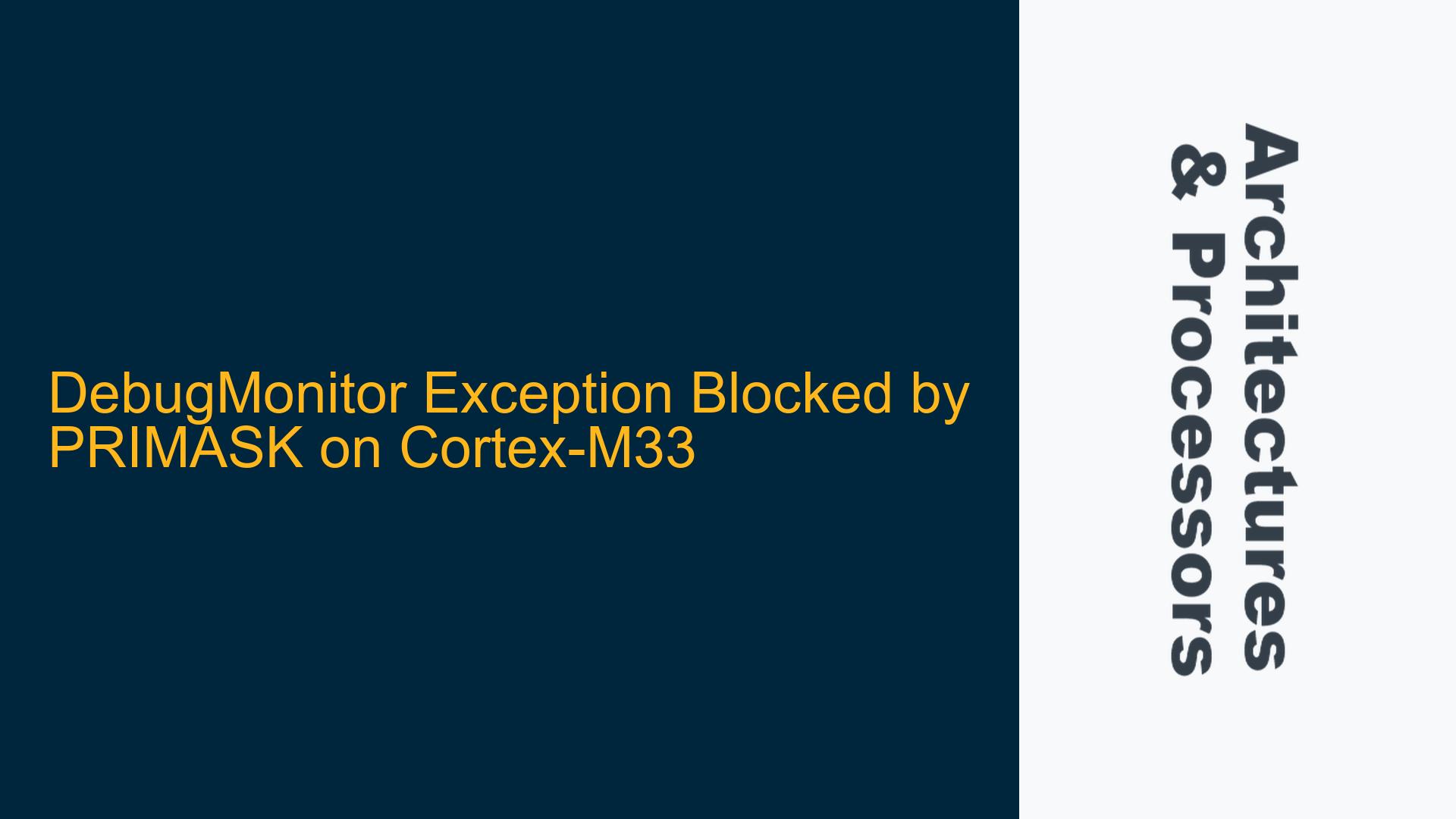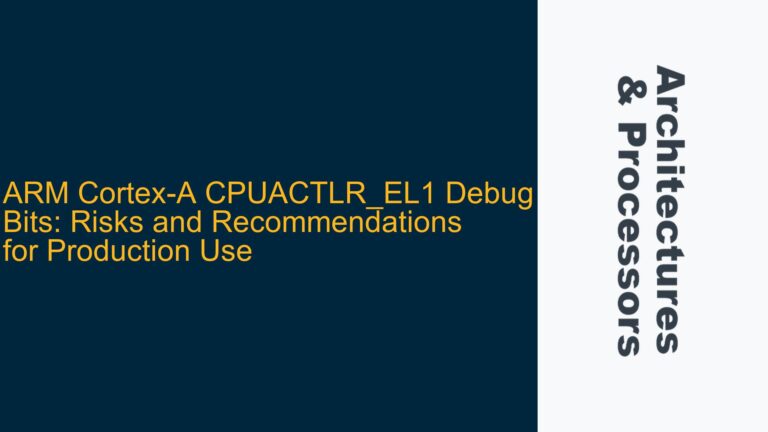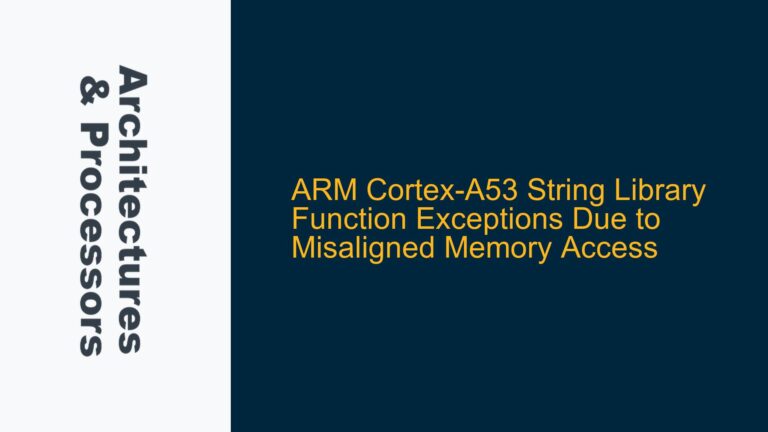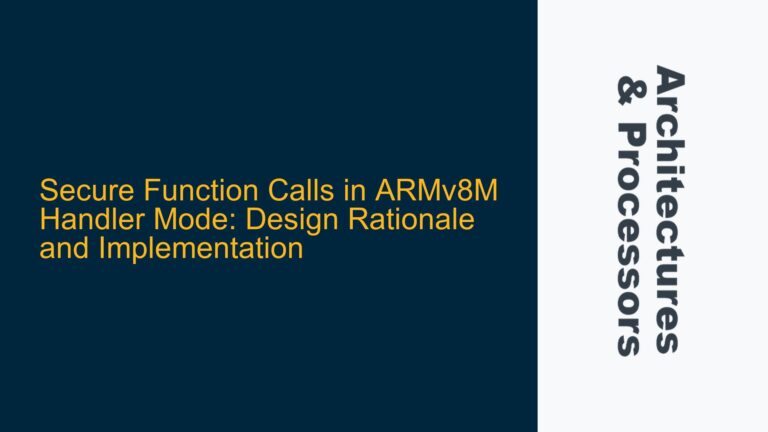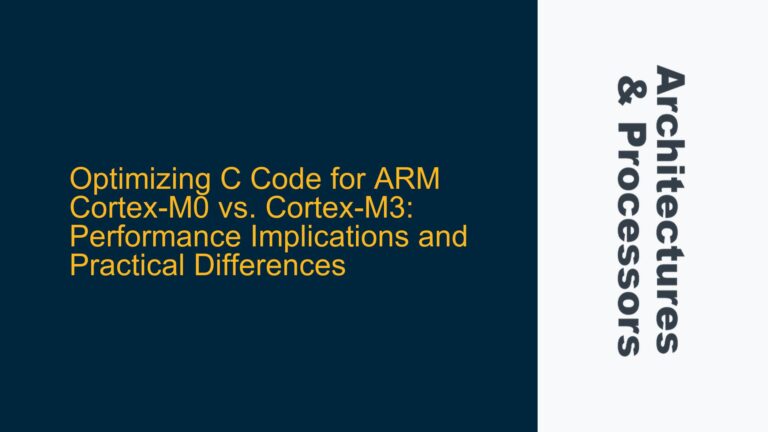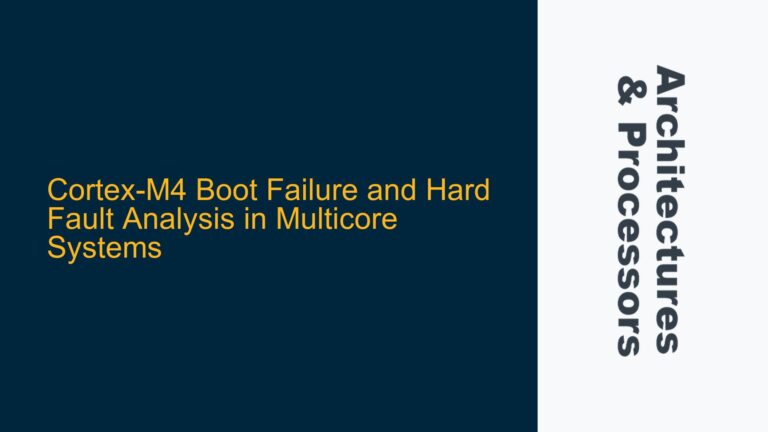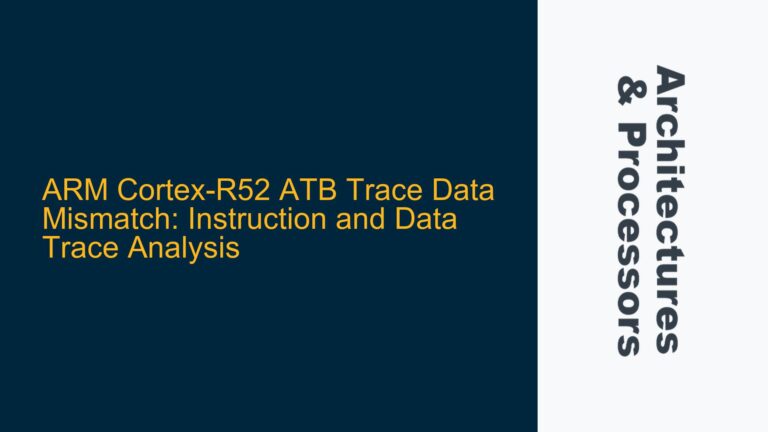DebugMonitor Exception Suppression During Interrupt Disable
The issue at hand involves the DebugMonitor exception, which is triggered by a Data Watchpoint and Trace (DWT) unit’s watchpoint function on an ARM Cortex-M33 processor. The watchpoint is configured to monitor a specific memory address, and when this address is written to, a DebugMonitor exception is expected to be raised. However, when interrupts are globally disabled by setting the PRIMASK register to 1, the DebugMonitor exception does not occur as expected. This behavior is critical in debugging scenarios where developers rely on watchpoints to catch specific memory access patterns, especially in real-time systems where interrupts are frequently disabled to ensure atomic operations.
The DebugMonitor exception is a configurable exception in the ARM Cortex-M series, intended to provide a mechanism for debugging purposes, such as monitoring data accesses or instruction execution. When a watchpoint is hit, the DWT unit signals the core to raise a DebugMonitor exception, allowing the debugger or firmware to handle the event. However, the exception’s priority and the state of the PRIMASK register play a significant role in whether the exception can be serviced.
The PRIMASK register is a single-bit register that, when set to 1, disables all configurable exceptions with a priority level greater than or equal to 0. This includes most interrupts and some exceptions, effectively raising the current execution priority to 0. The DebugMonitor exception, by default, has a priority level of 0, which means it cannot interrupt the processor when PRIMASK is set. This design choice ensures that critical sections of code, where interrupts are disabled, are not interrupted by debug events, which could lead to inconsistent states or unintended behavior.
The Cortex-M33 processor, like other ARM Cortex-M processors, implements a priority-based exception handling mechanism. Each exception, including the DebugMonitor exception, is assigned a priority level. When an exception occurs, the processor compares its priority level with the current execution priority. If the exception’s priority is higher (numerically lower) than the current execution priority, the exception is serviced immediately. Otherwise, it remains pending until the current execution priority is lowered.
In this case, the DebugMonitor exception is being suppressed because its priority level is not higher than the current execution priority when PRIMASK is set. This behavior is consistent with the ARM architecture’s exception handling model, which prioritizes system stability and determinism over debug convenience in critical sections of code. However, this can be problematic for developers who need to debug issues that occur within critical sections or who rely on watchpoints to monitor memory accesses in real-time systems.
PRIMASK Priority Elevation and Debug Exception Limitations
The root cause of the DebugMonitor exception suppression lies in the interaction between the PRIMASK register and the priority levels of exceptions. When PRIMASK is set to 1, it elevates the current execution priority to 0, effectively blocking any exceptions with a priority level of 0 or higher. The DebugMonitor exception, by default, has a priority level of 0, which means it cannot interrupt the processor when PRIMASK is set.
The ARM Cortex-M33 processor’s exception handling mechanism is designed to ensure that critical sections of code, where interrupts are disabled, are not interrupted by lower-priority exceptions. This design choice is crucial for maintaining system stability and determinism, especially in real-time systems where timing and consistency are critical. However, this also means that debug exceptions, such as the DebugMonitor exception, are effectively disabled during these critical sections.
The priority level of the DebugMonitor exception is configurable, but it cannot be set to a level higher than 0. This limitation is inherent in the ARM architecture and is intended to prevent debug exceptions from disrupting critical system operations. While this design ensures system stability, it can be a significant limitation for developers who need to debug issues that occur within critical sections or who rely on watchpoints to monitor memory accesses in real-time systems.
In addition to the PRIMASK register, the BASEPRI register can also affect the handling of exceptions. The BASEPRI register allows developers to mask exceptions with a priority level lower than a specified value. However, like PRIMASK, setting BASEPRI to a non-zero value can also block the DebugMonitor exception if its priority level is not higher than the specified value.
The ARM architecture provides a mechanism for escalating certain exceptions to a HardFault if they cannot be serviced due to priority constraints. However, this escalation mechanism does not apply to the DebugMonitor exception. According to the ARM architecture specification, only synchronous exceptions and DebugMonitor exceptions caused by the BKPT instruction can be escalated to a HardFault. Other DebugMonitor exceptions, including those triggered by watchpoints, cannot be escalated.
This limitation means that when the DebugMonitor exception is blocked by PRIMASK, it remains pending and does not escalate to a HardFault. As a result, developers may not be aware that a watchpoint has been hit, leading to missed debugging opportunities and potentially undetected issues in the system.
Implementing Debug Exception Handling with PRIMASK Considerations
To address the issue of DebugMonitor exception suppression when PRIMASK is set, developers need to carefully consider the interaction between exception priorities and the PRIMASK register. One approach is to temporarily lower the current execution priority within critical sections to allow the DebugMonitor exception to be serviced. This can be achieved by manipulating the PRIMASK or BASEPRI registers to enable exceptions with a priority level of 0.
However, this approach must be used with caution, as it can introduce race conditions or disrupt the timing of critical sections. Developers should ensure that any changes to the PRIMASK or BASEPRI registers are carefully managed and that the system remains stable and deterministic. In some cases, it may be necessary to use alternative debugging techniques, such as logging or breakpoints, to monitor memory accesses within critical sections.
Another approach is to configure the DebugMonitor exception to trigger a different type of exception that can be serviced even when PRIMASK is set. For example, developers can configure the DWT unit to generate a bus fault or a usage fault instead of a DebugMonitor exception when a watchpoint is hit. These exceptions have higher priority levels and can interrupt the processor even when PRIMASK is set. However, this approach requires careful consideration of the system’s exception handling strategy and may not be suitable for all applications.
In some cases, it may be necessary to modify the system’s exception handling logic to accommodate the DebugMonitor exception. For example, developers can implement a custom exception handler that checks for pending DebugMonitor exceptions and services them within critical sections. This approach requires a deep understanding of the ARM architecture and the system’s exception handling mechanism, but it can provide greater flexibility and control over the handling of debug exceptions.
Finally, developers should consider the impact of PRIMASK on other exceptions and system operations. While the focus of this discussion is on the DebugMonitor exception, the PRIMASK register affects all configurable exceptions with a priority level greater than or equal to 0. Developers should ensure that their system’s exception handling strategy is consistent and that critical sections are properly managed to avoid unintended consequences.
In conclusion, the suppression of the DebugMonitor exception when PRIMASK is set is a known limitation of the ARM Cortex-M33 processor’s exception handling mechanism. Developers must carefully consider the interaction between exception priorities and the PRIMASK register when designing and debugging their systems. By understanding the underlying mechanisms and implementing appropriate strategies, developers can effectively manage debug exceptions and ensure the stability and reliability of their systems.
